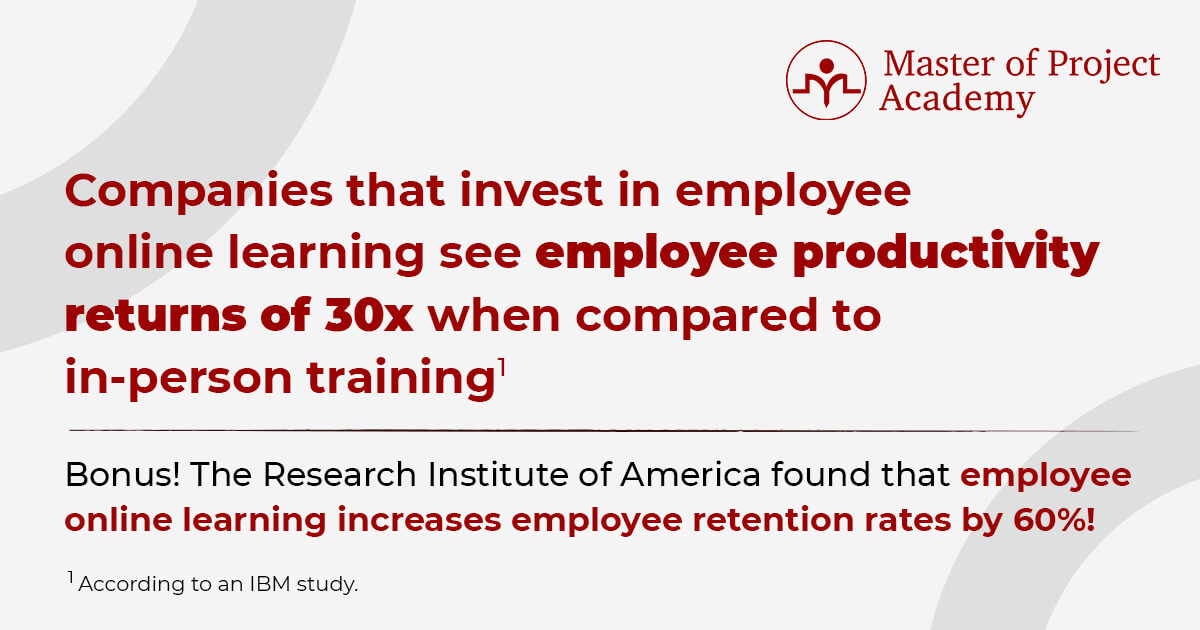Master of Project Academy’s 8-part series Horrible, No Good Bosses – The True Cost of Poor Leadership was created to address the most common ways poor leadership results in flat/declining revenues and increased expenses. In this series, we will explore the topics of Communication, Networking, Emotional Intelligence, Leadership, Discipline, Teamwork, Adaptability, Conflict Resolution, Empathy, Positivity, Decisiveness, and Persuasion.
In the first 7 of our Horrible, No Good Bosses – The True Cost of Poor Leadership, we discussed autonomy, purpose, growth, connection, engagement, handling poor performance, employee strengths, and many other elements of effective leadership.
- You can also check out the very first article of our Horrible Bosses Blog, No Good Bosses Blog series.
As we close out our series, we will pull all of those elements together with a practical tool to effectively lead your teams.
Alex’s Story
Alex has a “deer in the headlights” look as he tries to decide what to do next. He’s running a project, using a predictive approach, and his team is arguing about one of the requirements. Of the team of 7, there are 6 in the meeting. Currently, there are three options for how to deliver the feature and each option has two supporters. Everyone in the room feels strongly about their position and tempers are beginning to flare. One member just called another “stupid” and everyone is talking over one another. The 7th team member sent an email earlier explaining he wouldn’t be attending any more meetings because they were a waste of his time.
What is the quantifiable cost of poor project management?
Running projects well is critical to business success and survival. Have you ever thought of the quantifiable cost of poor project management? In a study that measured project outcomes from 2012 to 2016, a PMI report shared the following dismal news: ¹
- 15 – 16% of projects were considered a failure
- 49 – 53% were completed on budget
- 49 – 52% were completed on time
- 61 – 64% met the project goals
- $122 million wasted in US projects (for every $1 billion invested)
Alex’s project is at risk of not accomplishing the strategic goals it is designed to deliver, costing the company more time and money than expected, and decreasing employee engagement and satisfaction.

A tool that could have helped him to better manage his project is the Team Charter. The Team Charter is a document that the team creates in order to support collaboration and effective conflict resolution. In the document, the team has defined their values, operating guidelines, clear expectations of acceptable behavior, and more. It serves as the roadmap for the team.
- Our PM Core™ – Project Management Training for Business helps organizations develop their teammates into practitioners who can deliver measurable returns
Why should we use Team Charter?
Before we talk about how to use this tool, let’s discuss why we use it. First and foremost, a team charter will provide clarity to the team about what they are doing, why they are doing it, and how they are doing it. But there’s more to it than simply providing a document that helps them to move forward. Some magic occurs when a team is led through this process effectively. The individual team members begin to operate as a cohesive unit. They begin to feel an interdependence among themselves and a belongness to something larger. As they are being trusted with creating their own “rules of the road” they experience a level of autonomy and engagement increases.

How should we use Team Charter?
The first step is to bring the team together at the very beginning of the project, before any project work begins. Once together, the team will define the purpose and objectives of the project. This is a critical step as it helps them to clarify, amongst themselves, the answers to the what, why, how, and when of the project. Once this is done, the work begins on defining their own principles, values, and rules. This is when they answer questions that may include the following:
- What are our shared team values? Team goal?
- How will we communicate?
- What meetings will we have? Who will attend?
- Who is responsible for each meeting?
- Who will assign tasks to the group?
- How do we make decisions? Handle conflict?
- How do we measure performance? Deal with poor performance?
Conclusion
Many of the problems that have been occurring in Alex’s project could have been either avoided or quickly addressed had he taken the time to create the Team Charter at the beginning of the project. Often project managers and project team members cite a lack of time for the reason they do not create the Team Charter. Some are merely accustomed to old-school project management where the team is directed to do everything under a tightly controlled environment. Whatever the reason is for not doing it, the results are often still the same. There is a level of chaos present in the team and in the meetings. Much of this can be avoided by simply taking the time to create the foundation on which the team will perform.
We hope you have enjoyed our Horrible, No Good Bosses Blogs and will continue to enjoy our next offerings on project management and leadership.
If your organization needs assistance with leadership training and education, Master of Project Academy’s Leadership Program can help. In this program, your leaders will get instructive and hands-on training through interactive exercises, case studies, templates, and techniques that can be customized to your organization’s specific needs. For additional information, click HERE.


 Written by: Sandra Worley
Written by: Sandra Worley